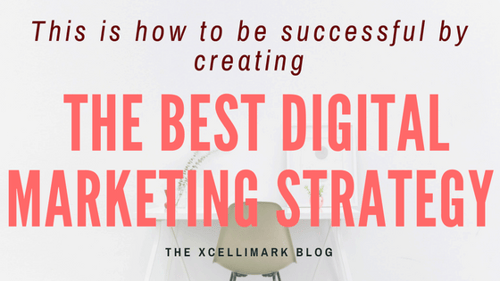Holy Silos! Free Yourself from Isolated Marketing Technologies

 Until recently, digital marketers have had to cobble together numerous technology “silos,” trying to optimize and integrate the different platforms in order to get the best results for business growth.
Until recently, digital marketers have had to cobble together numerous technology “silos,” trying to optimize and integrate the different platforms in order to get the best results for business growth.
However, these silos make it difficult to connect information in a way that provides a cohesive way of tying all your data into one place and one platform.
As long as your marketing and sales departments store and analyze their respective data independently, your marketing plan can’t live up to its fullest potential.
Marketing automation software is designed to bring every channel, tool and bit of data together in a way that streamlines your campaigns by targeting specific subsets of customers on an ongoing basis.[1]
When properly implemented, an automated approach requires far less effort and generates far greater returns than your previous tedious methods.
A Marketing Balancing Act
If you wrote down all the social media channels, project organization platforms, content management applications and email marketing solutions your business is currently using, you might be surprised by the length of the list.
If none of these tools connect, how can you be sure that the data shared between departments is accurate and relevant?
A lack of communication is one of the biggest pitfalls of the silo approach.
Today’s consumer switches from one device to another on a regular basis in order to connect with your brand through a multitude of channels. Segregated data makes it impossible to create an environment that remains consistent in spite of these rapid transitions.
Busting the Barriers
Until you break down the walls between the silos in your marketing plan, you’ll never be able to streamline your inbound marketing efforts.
When data remains disconnected, there’s no way to use a customer action from one channel to create a useful outcome in another.
Similarly, you can’t see how responses to one part of a campaign affect important metrics like lead capturing and conversions.
You’re left with an inefficient marketing plan that speaks to a broad audience that may have little interest in your products and services.
Until you break down the walls between the silos in your sales and marketing plan, you will be wasting hours of labor and admin on your side trying to collect and piece together all the information at your fingertips.
All this information is wonderful, yes, but what is the ultimate result?
Are you making your quarterly goal?
Are you hitting the number you planned for the month on all platforms?
In order to accurately pull together the information that will give you a confident answer to these questions, whether it’s for running your company, or giving a presentation to the CMO, VP or CEO, you will spend hours that could have been spent elsewhere.
Work smarter Ladies and Gents; not harder.
The Integration Factor
Modern marketing technologies seek to integrate data channels and productivity applications in a way that leaves silos behind in favor of an automated approach.
In an integrated setup, all the software used by your business links up to a central platform that correlates data from each source and keeps all the departments within the company connected.
Instead of being separated into unrelated segments, information flows freely back and forth from department to department; from business to consumer; from marketing to sales; and from social media to content.
This integrated method is exactly what you need to create that all-important unified customer experience that leads to increased sales for your business.
It addresses the current lack of connection between platforms and devices to deliver a consistent message that responds intuitively to the wants, needs and preferences of each individual in your target audience.
This makes it easy to hone your marketing efforts and target only the consumers who are interested in your brand and are therefore prime candidates for making purchases.
Using an integrated platform also ensures that important metrics are always up to date and that the reports you run are accurate in light of your customer’s most recent activities.
You can then optimize your campaigns accordingly to take full advantage of what automation has to offer.
Automation is King
Automation relies on integrated reporting and metrics to respond to specific inputs from customers and utilizes parameters based on these inputs to generate a relevant response. This may consist of:
- Sending a discount coupon to a new customer after they place their first order
- Emailing thank-you notes to people who download content from a landing page
- Delivering retargeting ads to customers who leave your site before converting
- Posting your social media campaigns through the platform so they can be tracked in one place
- Designing your website on the platform so the performance is all right there
- Sending emails to your prospects with follow-up email sequences
- Finding who your prospects and targets are and who has been viewing content on your website
- Using smart marketing tools that customize the content to the customer experience
- Posting blogs from your platform
- Sending out your company newsletters
- Utilizing lead scoring tools for better sales follow-up
- Monitoring social media feeds and trends
- Ensuring SEO best practices
- Optimizing your website for mobile and tablets
By relying on data that reflects actual customer behaviors rather than generic marketing techniques, an automated platform can increase the quality of your leads by as much as 451 percent.[2]
Lead scoring tools allow you to rank potential customers in terms of how likely they are to convert and allows you to adjust your automated parameters to take full advantage of the behaviors that characterize these types of prospects.
Engagement: The Key to Success
Automating your marketing approach ensures consistent communication between your business and your customer base. This high level of engagement is critical to create and maintain customer relationships long term.
Your customers will appreciate it when you offer relevant content and useful information instead of blasting them with generic advertising. To show their appreciation, they’ll likely become a repeat customer and refer other prospects to you.
Marketers using automation techniques report conversion rates up to 53 percent higher than those sticking with the silo approach, a number representing an increase not only in profits but also in loyal customers. Much of this is likely due to the improved relevancy of content that helps guide purchasing decisions by meeting customers wherever they are in the sales funnel.
A higher level of customer satisfaction leads to lasting brand loyalty, and implementing automation ensures that you never leave a prospect behind.
By using marketing automation to break down the silos between the various marketing technologies, your business will create a more efficient and effective approach to reaching customers.
Fewer resources spent on each lead and conversion means a higher ROI for you. Adjust your techniques based on the data, and you’ll reach the greatest number of customers with every new campaign.
[1] https://www.bostoninteractive.com/blog/marketing/what-is-marketing-automation
[2] https://www.vendasta.com/blog/75-marketing-automation-stats/








